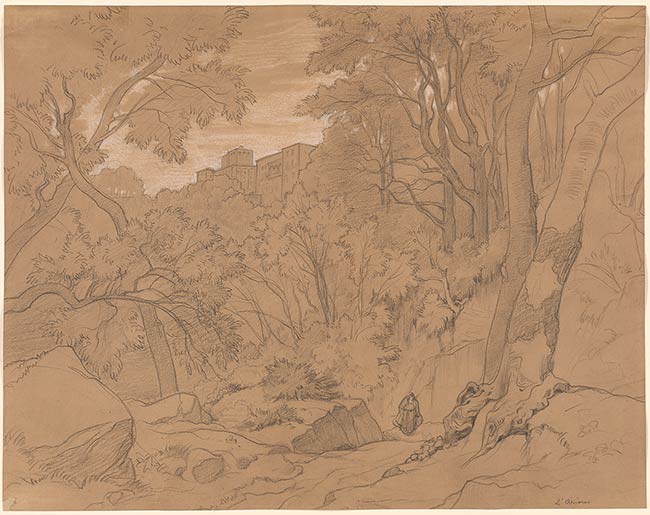
On one of his trips to Rome in the 1820s, Bertin visited the small hill town of Ariccia, southeast of Rome in the Alban Hills. An ancient settlement along the Appian Way, Ariccia became the domain of the powerful Chigi family in the seventeenth century when it was revitalized by Gianlorenzo Bernini and Carlo Fontana. Its distinctive entrance bridge was constructed to replace ancient ramparts in 1854.
While exploring the area, Bertin produced a series of drawings depicting the site from different angles. This sheet is among the views showing the approach to the town, whose cubic forms atop the hill are seen through the foliage. Visible in this sheet is the roof of Bernini and Fontana's Palazzo Chigi (1664-72). Bertin's widow inherited the contents of his studio and, in 1873, presented the Chartres museum with a large cache of black chalk nature studies made on his Roman sojourns, including seventeen additional views inscribed "L'Aricia," some of which bear annotations about the vegetation of the surrounding hills. Several of these sheets have an arched top, suggesting a decorative context. The group at Chartres also includes drawings of towns along the same established route followed by artists, including Tivoli, Civita Castellana, Castel St. Elie, Olevano, Subiaco, Vico, Terni, and Genzano.
Inscribed in graphite, at bottom right corner, "L'Aricia".
Watermark: crown on a shield and letter M surrounded by leaves.
Carlson, Eric G., 1940-2016, former owner.
